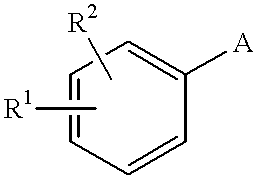Pyrazole derivative
a pyrazole and derivative technology, applied in the field of medicaments, can solve the problems of no reports on a compound whose selectivity over vocc has been confirmed, no illustrative disclosure or suggestion about its inhibitory activity, and no pyrazolyl disclosure. achieve the effect of significant inhibition
- Summary
- Abstract
- Description
- Claims
- Application Information
AI Technical Summary
Benefits of technology
Problems solved by technology
Method used
Image
Examples
reference example 1
[0108]Sodium methoxide was added to a mixture of 2-acetylthiazole and methanol under ice-cooling, followed by stirring at room temperature for 20 minutes. Ethyl trifluoroacetate was added to the reaction solution under ice-cooling. After stirring for 19 hours while heating under reflux, it was purified in the usual way. Then, methyl hydrazine, acetic acid and ethanol were added thereto. After stirring for 30 minutes while heating under reflux, it was subjected to purification in the usual way to give 2-(1-methyl-3-trifluoromethyl-1H-pyrazol-5-yl)thiazole.
reference example 2
[0109]An n-butyl lithium-n-hexane solution (1.6 M) was added to a mixture of diisopropylamine and THF at −30° C. or below, followed by stirring at −30 to −50° C. for 15 minutes. Then, 2-propionylthiophene was added to the reaction solution at −60° C. or below, followed by stirring at −60° C. or below for 90 minutes. The reaction solution was added to a mixture of trifluoroacetic anhydride and THF, which was cooled at −60° C. After stirring at −60° C. for 1 hour, it was subjected to purification in the usual way to give a brown oil. Hydrazine hydrochloride and ethanol were added to this brown oil. After stirring at 50° C. for 2 hours, it was subjected to purification in the usual way to give 4-methyl-3-(2-thienyl)-5-trifluoromethyl-1H-pyrazole as a brown solid.
reference example 3
[0110]An n-butyl lithium-n-hexane solution (1.6 M) was added to a mixture of 3-(2-thienyl)-5-trifluoromethyl-1H-pyrazole and THF at −60° C. or below, followed by stirring at 0° C. for 50 minutes. Ethyl chloroformate was added to the reaction solution at −60° C. or below. After stirring at −78° C. for 1 hour, it was subjected to purification in the usual way to give a mixture of ethyl 5-(1-ethoxycarbonyl-5-trifluoromethyl-1H-pyrazol-3-yl)thiophene-2-carboxylate and ethyl 5-(1-ethoxycarbonyl-3-trifluoromethyl-1H-pyrazol-5-yl)thiophene-2-carboxylate as a light yellow solid. Then, a mixture of this mixture with sodium bicarbonate, ethanol, 1,4-dioxane and water was stirred at room temperature for 3 days, and it was subjected to purification in the usual way to give ethyl 5-(5-trifluoromethyl-1H-pyrazol-3-yl)thiophene-2-carboxylate as colorless powder crystals. This was hydrolyzed with a base in the usual way to give 5-(5-trifluoromethyl-1H-pyrazol-3-yl)thiophene-2-carboxylic acid.
PUM
| Property | Measurement | Unit |
|---|---|---|
| temperature | aaaaa | aaaaa |
| temperature | aaaaa | aaaaa |
| temperature | aaaaa | aaaaa |
Abstract
Description
Claims
Application Information
 Login to View More
Login to View More - R&D
- Intellectual Property
- Life Sciences
- Materials
- Tech Scout
- Unparalleled Data Quality
- Higher Quality Content
- 60% Fewer Hallucinations
Browse by: Latest US Patents, China's latest patents, Technical Efficacy Thesaurus, Application Domain, Technology Topic, Popular Technical Reports.
© 2025 PatSnap. All rights reserved.Legal|Privacy policy|Modern Slavery Act Transparency Statement|Sitemap|About US| Contact US: help@patsnap.com



